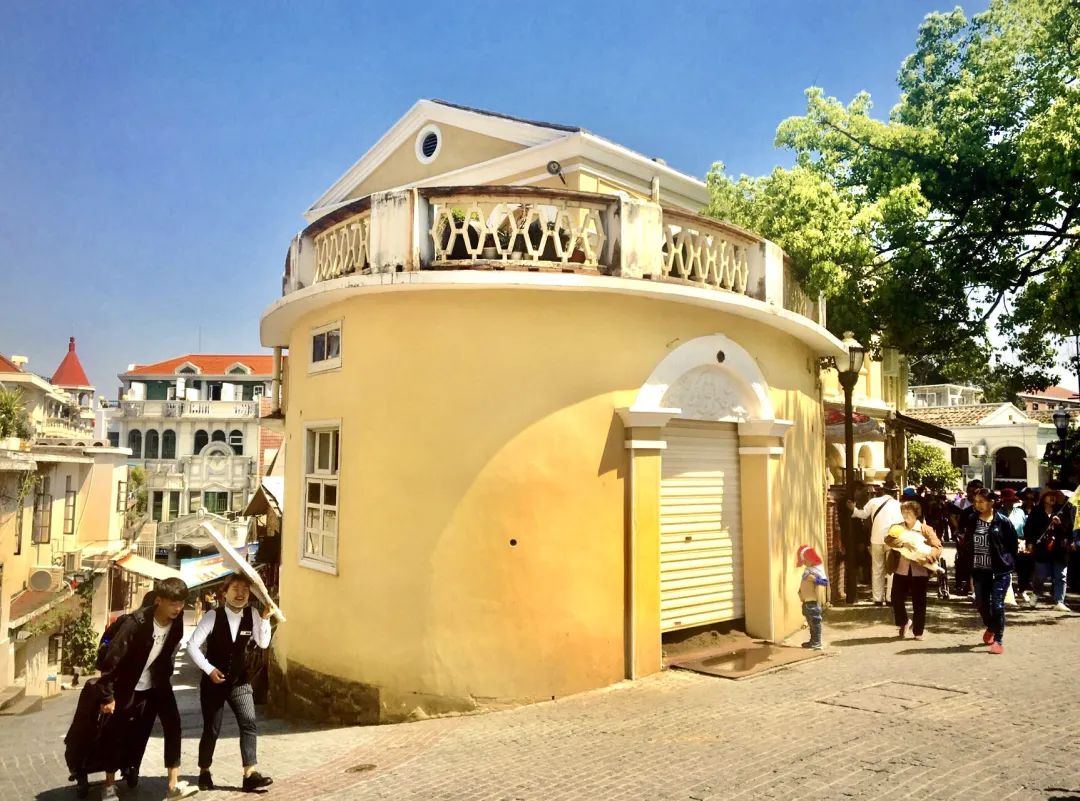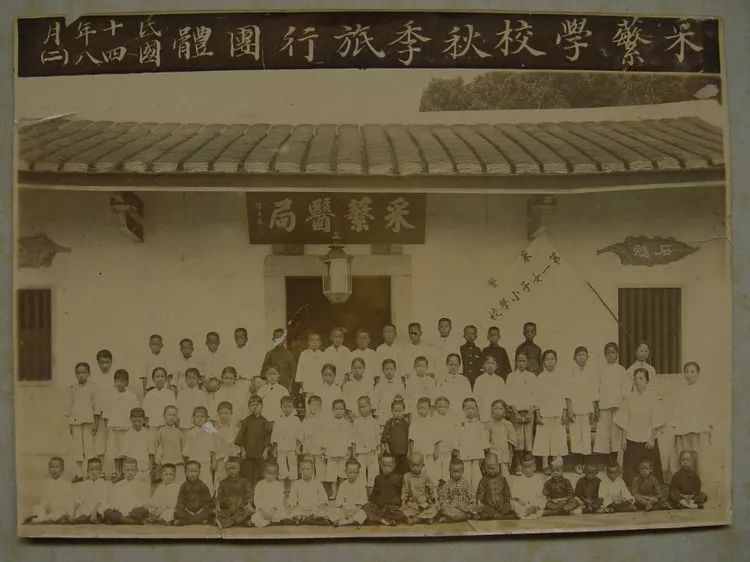Tomb of Im Jun Na and Tomb of Im Hwa Sak, moved to Humao Park

Presiding over the return of Lim Woosaka's casket to his home town was his sixth and first natural son, Lim Peng Siang (1873 ~ 1944, another account says he was born in 1872), then president of the Singapore Chinese Chamber of Commerce and Industry (SCCCI), who was more youthful than blue, expanding the family's business network, and was the hu mau lin Singapura's second-generation authority. Lin Bingxiang in March 1944, died in his hometown of Hu Mao Park built a cemetery, died because of the Japanese occupation and can not be buried, sent coffins in the coffee mountain. May 26, 1948 "Nanyang Shangbao" a news report, and the founder of the company Lin Bingxiang and Feng coffin sent back to Fujian by the Kengxiang wheel, Longxi Hall Chairman Guo Coral and Zhangzhou all walks of life of the overseas Chinese Friends of the funeral, his son Lin Shaopeng and other filial piety pallbearers escorted. In March 1952, Lin Bingxiang's son Lin Shaoping mentioned his father's coffin transported from Singapore back to his hometown, all the way through Hong Kong, Shantou, Xiamen, etc., because the Lin family has a wide range of friendships, along the way there are friends and relatives to pay tribute to the home town condolences and sacrifices lasted seven days after the return to the home town, buried in the Humao Park.
Family photos hanging in the hall of the Lin family temple in Xizhou.

Lin and Ban Lin Bingxiang father and son were both born in Longxi County, Fujian Province, twenty-eight Du Hu Mao Bao City, She Anqianwei Mianyuan (elegant name: Meiyuan) Lin family ancestral home, young to go to the South China Sea, in the business to obtain great achievements, become the leader of the Xingzhou Chinese community. Their commercial achievements and social contributions have been much discussed in literature and history.In 2017, the Literature and History Committee of the Longhai Committee of the Chinese People's Political Consultative Conference (CPPCC) published an internal document titled Longhai Literary and Historical Materials: Lin and Ban Lin Bingxiang Album, which collects information about the father and son of the Shumao Lin family from both at home and abroad, covering the genealogical descent of the Lin family and the investment in construction of the ancestral home.
It is noteworthy that the Chinese-born Lin and Ban Lin Bingxiang, father and son, who insisted on returning to their roots, were naturalized in 1881 and 1902, respectively, in their prime, and in their conception, it was not a paradox to be naturalized and to be buried in one's hometown. This paper briefly describes the commercial and social influence of the Lim family in Sing Chau, compares the God's Plaque enshrined in the Nine Dragons Hall with the genealogy of the Lim family, and analyzes the concept of ancestry and emotional attachment of the overseas Chinese in the South Seas by presenting the planning and investment of the Lim family in the place of their ancestry based on the field research in Fujian Province and the national archives of the United Kingdom.
The Hu Moulin Family of Xingzhou
From a wage earner to a son-in-law, Lim Wo Ban took charge of and expanded the Fung Yuen Shipping Company founded by his father-in-law, Wee Bin (1823~1868), for nearly half a century. With the support of his father, Lim Peng Siang and his 9th brother, Lim Peng Mao (1884~1960), established the Wo Fung Company in 1904, whose subsidiaries included the Wo Fung Shipping Co. Its subsidiaries included Ho Fung Shipping Company, Ho Fung Oil Company, Ho Fung Rice Company, Ho Fung Soap Factory, Ho Fung Ash Company, Ho Fung Sawmill, Ho Fung Credit Bureau, and Ho Fung Bank, etc., which were involved in various fields such as shipping, trade, industry, and finance.
As the leaders of the Min Gang, the Lin family was an important bridge between the Chinese community and the colonial government. Mr. Lin and Mr. Ban were appointed Squire of the Taiping Board, and were members of the Po Leung Board, members of the Harbour Board, and counsellors of the Chinese Counsellors' Bureau, and were involved in the founding of the Jardine's Lookout Club and the Chinese General Chamber of Commerce. Mr. Lim Beng Siang also served as the President of the Chinese Chamber of Commerce, Chairman of the Hokkien Huay Kuan, etc. In 1929, he participated in the establishment of the Sin Chew Zhangzhou Ten Affiliated Association (later renamed as the Sin Chew Zhangzhou General Association), and in 1939, he founded and became the President of the Longxi Club of Singapore, and he was an honorary member of the Chinese Swimming Club, the Heping Club, the Garden Club, the Wakilee Club, and the Jardine House Club of Singapore, and he was appointed a member of the Taiping Board of Gentry in 1903. In 1912, he was appointed as a member of the Chinese Board of Supervisors for 30 years and held various positions, including member of the Po Leung Kuk, the first Chinese Member of Parliament for the Harbour Department, the first Director of the Ketsu Chang San Chinese Community, and a member of the Port of Singapore Authority.
One of the lesser-mentioned aspects of Lim Beng Cheong's Chinese community network is his close relationship with the Nine Dragons Hall, the grand ancestral temple of the Lim Clan. In 1927, when then Prime Minister Lim Chee Yee (Lim Lu) advocated for the construction of the Nine Dragons Hall, Lim Beng Cheong, who was 55 years old at the time, was one of the most generous contributors, and the amount of the donation ($5,000) was second only to that of Lim Lu, and also ranked as the number one board member. After the completion of the Nine Dragons Hall, Lin Bingxiang in the front hall of the center niche for his great-grandfather Chunzhi, father and Ban set up the Lord of God, for himself and his younger brother Bingmao set up the Locust. There is also a shrine for his 13th brother, Pingjin (秉真) in the center niche, and for his mother, Ge Xuemei (葛雪梅) with his sons, Shao Peng (绍鹏), Shao Koon (绍堃), and daughters, Shi Ji (石治) and Yu Ji (于治). According to Longxi, the huge plaque "Wanpai Tongyuan", which hangs in the front of the entrance of Jiulong Hall opposite the shrine, was dedicated by Lin Bingxiang in the name of Xiamen Zhongxiao Hall.

Lam Bing Cheung and his two wives in the Kowloon Hall.
The information on the tablet of Humaolin of Nine Dragons Hall makes a correction for the lineage of the Lin family circulating in Longxi. In Longxi, it is said that Lin and Ban had four wives and four concubines, Huang, Qian, Ma and Huang, with 16 sons and six daughters, five of whom were natural children and the rest were illegitimate children. The tablets of Lin and Ban in Kowloon Tong show that he had five wives, namely Guo Shuqin, Qian Shuzhen, Huang Ciqin, Huang Shuhui and Ma Duanhui. According to the order of listing, Guo Shuqin should be the first wife, and Huang Ciqin is presumed to be Wenxia, the daughter of Huang Min. According to Longxi, of Lin and Ban's five biological sons, Bingxiang and Bingmao were born in their hometowns, and the other three youngest sons were born in Xingzhou, so it can be inferred that Lin and Ban traveled back and forth between Fujian and Xingzhou, and that they had concubines in both places. It is worth mentioning that all of Lin and Ban's sons had two names, the clan name was "Ping" and the family name was "Bing", for example, Bingxiang's clan name was "Pingxiang" and Bingmao's clan name was For example, the name of the Bingxiang clan is "Pingxiang" and the name of the Bingmao clan is "Pingmao".
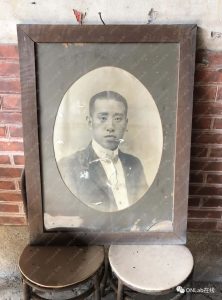
Portrait of Lin Bingmao in the temple of the Lin family in Xizhou.
Longxi's record of Lin Bingxiang's marriages states that he married Li Maeniang in his hometown, and later married Li Qingyuan's daughter as a concubine, and that his wife's uncle, Li Junyuan, was a great help to him in his business. However, the Nine Dragons Hall Lin Bingxiang Lu Shi engraved with two wives, Li and Huang, Li presumed to be Lee Mai Niang, the Sin Chew Report has reported on it. Compared to the Singapore Coffee Hill burial research, side room Huang's presumed to be Huang Wende's daughter Yuezhu, that is, Lin Bingxiang common mother Huang Wenxia's niece, Wende's only grandson Yongqing died young, Bingxiang is also one of the executors of his estate, the two families have a close relationship. March 1952 "Sin Chew Daily" reported that Lin Bingxiang made a will before he was born, the estate will be divided into 100 by the family members of the inheritance, his death "When he died, he left behind seven wives and concubines, and in addition to his own three children, he also had nine children who were not his own.
Fujian's Marginal Forestry Industry
Lin He Ban was born in Longxi, the eldest son of a poor farming family. At the age of 16, he was forced to go to the South Seas, first to Giant Harbor in Dutch Indonesia, then to Xingzhou, and returned to his hometown to honor his ancestor after a successful career, setting up the Hwamao Company, reclaiming land and building the Shijia Xinbei Farm and Xunyu Farm, with a cumulative property of 517 stone seeds. He was also a famous philanthropist in Hu-Mao, organizing voluntary schools and setting up voluntary clinics, sending out yearly payments to poor folks, giving coffins and alms to the poor and the dead, building bridges and roads, and donating money for the construction of temples. 1914 Lin and Ban passed away, and in the fifth year of the Republic of China (1916), the Lin family set up a separation of the family according to their wills, "castration", and set aside some of the land for ancestor worship, and allocated the rest to the children and grandchildren and the second and third families under their wills. The rest was distributed among the children and grandchildren and the second and third houses. Lin Bingxiang inherited his father's business, continued in Longxi, especially Humao, invested heavily in the development of industry, father and son of two generations is Humao deservedly uncrowned king.
Lin and Ban also purchased land in Beixitou Weizai (now Xizhou) to build a big house, which was supervised by his eldest son, Bingyuan, including two four-room houses on the west side (now called Lin Bingxiang's Ancestral House, with a floor area of about 2,100 square meters and a land area of about 3,600 square meters), which are customarily known as: "Erluxu", "Ancestral House", and "Ancestral House". ", said to have been built in the nineteenth year of the Qing Guangxu (1893), of which the East Block Alley is regarded as a family temple and the West Block is presumed to be inhabited by Lin and Ban; the five connected triplexes on the east side (now known as the Lin Bingxiang Ancient Residence, with a floor area of about 2,200 square meters and a site area of about 4,500 square meters) are customarily known as the "Five Falls". ", is said to have been built in the thirty-second year of the Qing Dynasty (1906), presumably for the children of the five wives of Lin and Ban lived. The Lin family residence is surrounded by the original water channel for protecting the village, with a drawbridge set up to control access, and the front court is open and equipped with a guard pavilion. The buildings are typical of traditional Zhangzhou houses, with local decorations of Nanyang influence, and the layout is a front courtyard with rows of bungalows at the back, which are used as auxiliary living and storage, and it is rumored that a school was also set up in the back room.
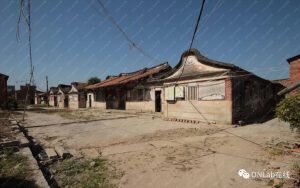
The Second Alley of the Lin Family in Xizhou City
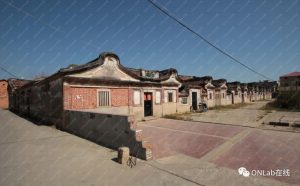
Xizhou Lin Family Alley No. 5
Lin Bingxiang and Bingmao were both born and educated in Humao, and were deeply attached to their ancestral home. They inherited their father's philanthropic legacy (building schools, providing medical care, assisting with coffins, giving medicine, helping neighbors, and settling lawsuits), and set up voluntary schools (nine Caijia Schools, one Humao Commercial High School, etc.), and voluntary medical clinics (Caijia Medical Bureau) in their father's name. The two brothers also promoted the modernization of Longxi's agro-industrial industries by virtue of their foresight and ability to raise capital, including the establishment of an electric power company in 1913 in Shimai (Longxi's capital), which was renamed "Shimai Huatai Sawmill Electric Light Co." in 1917, to provide electricity for industrial use, such as sawmilling and milling, as well as lighting for civilian use; In 1916, "Shima Jianfeng Brewery" was established; in 1918, "Shima Jianxiang Electric Weaving Factory" was opened; in 1929, "Fengxiang Agricultural and Forestry Company" was established in Wan'an Village, Zhangpu County. In 1929, he founded "Fengxiang Agricultural and Forestry Company" in Wanan Village, Zhangpu County.
Lin Bingxiang not far from the family residence in the Tianyang purchase of a large area of land, the construction of Xizhou villa (commonly known as Fanzai building), covers an area of 15 acres, by the villa building (floor area of 250 square meters, two-story building, each floor of the hall, four rooms), fishponds, flower gardens, pavilions, elevated building composed of concrete corridors connected to each other with a low railing, easy access to and from the daytime can be seen in the countryside, at night you can take advantage of the cool and enjoy the moon. Local rumors in Longxi say that when Lin Bingxiang returned to his hometown in 1918, he had planned to build Humao Park on the west side of Xizhou Villa, which covered an area of about 50 acres, including an auditorium, library, hotel, ball field, and a small west lake, etc. He also planned to build a middle school and a university on the north side of the foot of the pagoda in an attempt to build Humao into an advanced and civilized town. The construction of Humao Park was started in the 1920s, but due to the heavy damage suffered by the Wo Fung Company, only the pavilion, pond, rockery, butterfly garden, peach garden, citrus garden, and Lin Bingxiang's cemetery were completed.
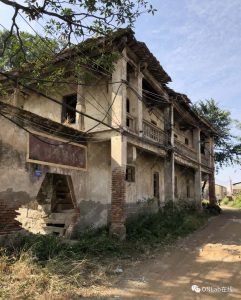
Xizhou Villa has become a dangerous building
Xiamen was a transit place for the Lin and Ban families to travel between Humao and Xingzhou, as well as an important port for Wafeng Shipping. In addition to investing in commerce and industry in Xiamen to support charitable causes, they also purchased land and bought property. Unlike overseas Chinese, as British nationals, they completed the registration of their properties with the British Consulate. According to the collection of the British National Archives, the Hu Mao-Lin family had owned at least two sea-front properties on Xiamen Island, which were both purchased by Lin Bing-Mao of the Ho-Feng Company, one of which was the British Concession Lot No. 3, purchased on June 2, 1916, which was transferred to Chee Seng Tong Limited (济生堂有限公司) on April 15, 1936, and the other was the face of the Sea Lot, which was located in the back of the Liao-Zai area on Xiamen Island, on November 11, 1926, and was registered in the British Consulate. The other property was a land parcel in the sea at Laosai Hau on Xiamen Island, which was purchased directly from a local man, Chen Jinbai, in November 1926, and on December 14, 1927, the registration of the land parcel was completed as Lot No. 157 at the British Consulate.
Difficult to fulfill the old dream of Shumoulin
The Lim family's business in Singapore flourished for nearly half a century. The hill at Hop Lok Road (where the Miramar Hotel, Unity Hotel and Apollo Hotel are located), where the Hoh Fung Company's properties were concentrated, was once called "Hoh Fung Hill"; and there were two piers on the banks of the Singapore River named "Ho Puah Quay" and "Peng Siang Kei" (Peng Siang Kei). "Two jetties along the Singapore River were named Ho Puah Quay and Peng Siang Quay. The three remaining warehouses, built in 1895, were taken over by Wong Ting Man, grandson of Wong Cho Yiu, in 2017, and transformed into The Warehouse Hotel, a heritage hotel with a distinctive character.
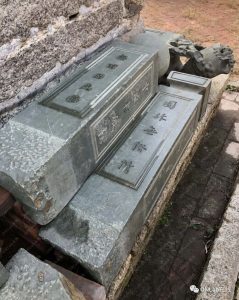
Remains of Lin Bingxiang's Tomb
Unfortunately, the investment and industry of the Lin family in Xiamen has long been forgotten, but fortunately, their deeds are still passed down in Longxi, and the Lin Family Alley has survived and was listed as one of the seventh batch of municipal cultural relics protection units in Longhai City in 2011. The dilapidated old house is in urgent need of protection and reuse, and the Xizhou Villa and the Humeaux Park have become a dangerous building in ruins. It is sad to see the tombs of the three generations of the Lin family, the cemetery of Lin Bingxiang in Humao Park suffered damage during the Cultural Revolution, and was relocated and buried in Pungsan Tianbian Village, with the remaining tombstone components stored in the backyard of the family temple; his grandfather Lin Chunzhi and his father's two graves of Lin and Ban were relocated to the abandoned Humao Park during the major development in recent years. Hu Mao Lin family father and son spent their lives trying to build a happy place in the ancestral home, buried in the hometown in order to shelter the family, however, the efforts of two generations could not resist the dramatic changes in politics, and ultimately it is a difficult to fulfill the old dream.
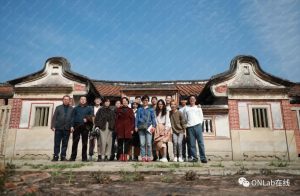
January 6, 2020 NUS Architecture Faculty and Students Visit Xizhou Lin Family Alley
Published in The Source
2021 - Issue 5 - General 153, pp. 16-19.


